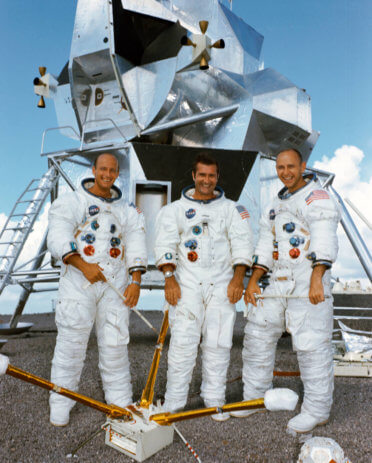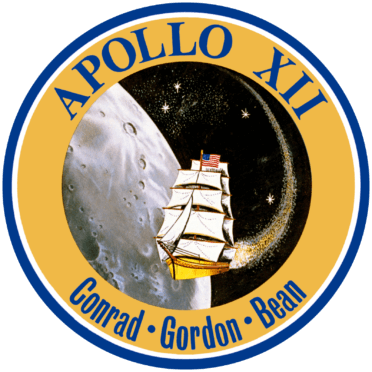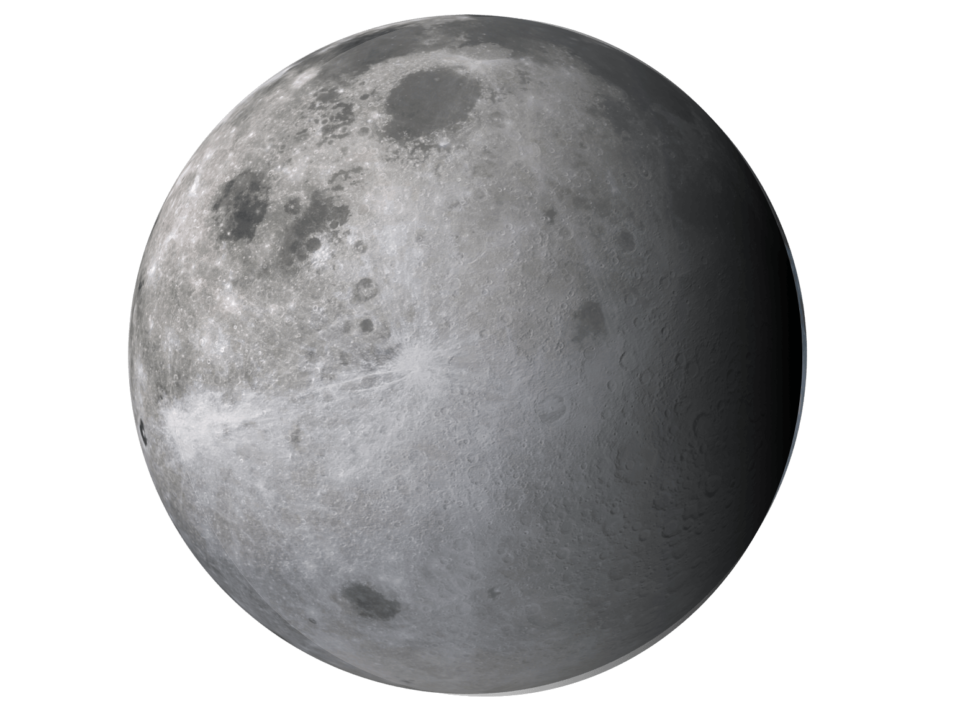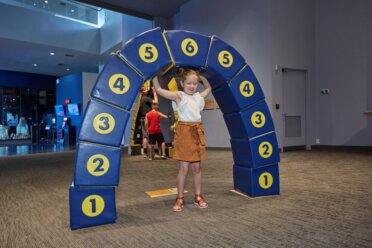
50 years ago this week the second manned mission to the Moon had commenced with Commander Charles “Pete” Conrad, Command Module Pilot (CMP) Richard F. Gordon and Lunar Module Pilot (LMP) Alan L. Bean aboard the lunar module.
During the launch, lightning struck the Saturn V rocket, resulting in the launch controllers to lose telemetry contact twice. Astonishingly, the lightning did not harm the MIT-designed guidance systems.
Some of the mission’s objectives where:
- Extensive series of lunar exploration tasks by the lunar module crew
- Deployment of the Apollo Lunar Surface Experiments Package
- Selenological inspection
- Surveys and samplings in landing areas
- Development of techniques for precision-landing capabilities
- Further evaluations of the human capability to work in the lunar environment for a prolonged period of time
- Deployment and retrieval of other scientific experiments
- Photography of candidate exploration sites for future missions
That was a lot to accomplish in a mission that took 4 days to arrive on the moon after launching on November 14, 1969, and only staying there for a total of 31.6 hours before returning back to Earth on November 24, 1969. Landing on the moon November 19 in the Ocean of Storms, it had touched down approximately 950 miles west of where Apollo 11 had landed.
The astronauts also were to retrieve portions of the Surveyor III spacecraft, which had soft-landed on the moon April 20, 1967, a short distance from the selected landing site of Apollo 12. They collected parts of this lander and brought them back. This included a TV camera, electrical cables, a sample scoop and pieces of aluminum tubing. Some of the pieces chosen for the collection were picked to test and see if any life from Earth that hitchhiked on the spacecraft survived their time on the lunar surface. They also analyzed them to determine how they were affected in the 31 months they were in the lunar environment.
Learn more about the Surveyor III Spacecraft experiements
 This is the official crew insignia for Apollo 12, the United States’ second lunar landing mission. The clipper ship signifies that the crew is all Navy and symbolically relates the era of the clipper ship to the era of space flight. As the clipper ship brought foreign shores closer to the United States and marked the increased utilization of the seas by this nation, spacecraft have opened the way to the other planets and Apollo 12 marks the increased utilization of space-based on knowledge gained in earlier missions. The portion of the moon shown is representative of the Ocean of Storms area in which Apollo 12 will land.
This is the official crew insignia for Apollo 12, the United States’ second lunar landing mission. The clipper ship signifies that the crew is all Navy and symbolically relates the era of the clipper ship to the era of space flight. As the clipper ship brought foreign shores closer to the United States and marked the increased utilization of the seas by this nation, spacecraft have opened the way to the other planets and Apollo 12 marks the increased utilization of space-based on knowledge gained in earlier missions. The portion of the moon shown is representative of the Ocean of Storms area in which Apollo 12 will land.
Credits: NASA
Watch the first moonwalk of Apollo 12.








